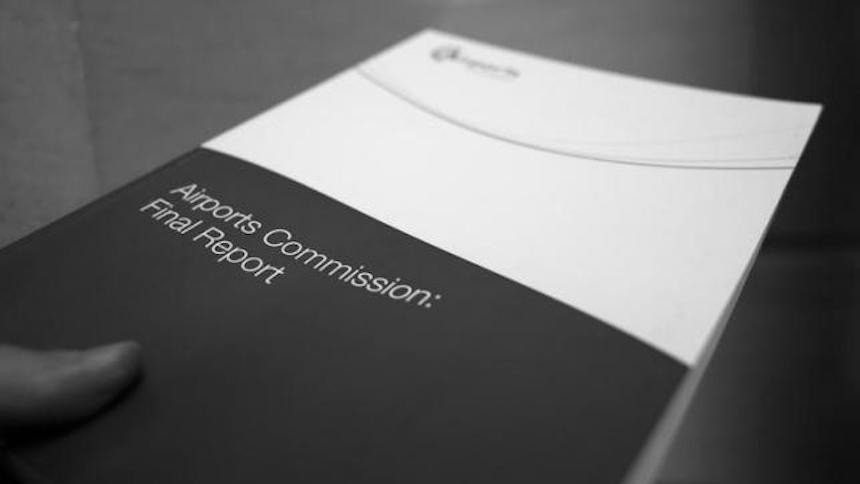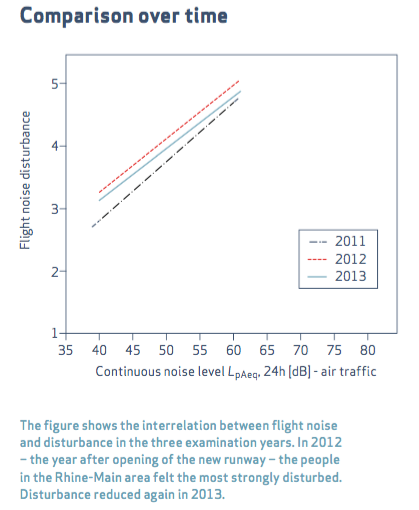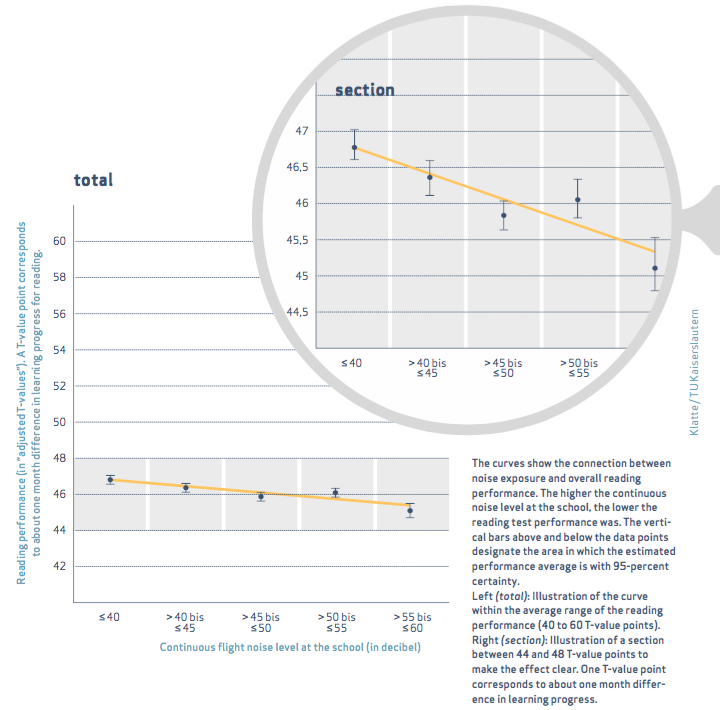 The Airports Commission published its Final Report in July 2015 stating its choice of Heathrow for expansion by building an additional runway on the north west side. One year on, is the Commission’s report now out of date?
The Airports Commission published its Final Report in July 2015 stating its choice of Heathrow for expansion by building an additional runway on the north west side. One year on, is the Commission’s report now out of date?
One year on, it is becoming increasingly clear just how much has been left out and what a bad deal the Commission give to the communities around the airports. Maybe this is not surprising given that Davies was employed by a major owner of Heathrow up to his appointment and that he was employed by Heathrow’s bankers immediately after his appointment finished. Maybe it was because he is a director of a company that owns the company that runs the investment fund that is buying up property around Heathrow.
Consider the following:
NORAH (Noise-Related Annoyance, cognition and Health)
In May 2015 consultants Jacobs UK Limited acting for the Airports Commission stated that:
“It is considered that a full Health Impact Assessment (HIA) / Equalities Impact Assessment (EqIA) would neither be appropriate or achievable at this stage of the assessment of future airport expansion options due to current information limitations. However, based on the Appraisal Framework assessment both HIA and EqIA would require further consideration at the project level assessment”.
Jacobs did think however that “current air quality and noise findings indicate that significant health impacts are likely and should be further studied at a project level”.
Contrast this with Germany and we start to see the disregard for the welfare of British citizens.
Prior to expansion of Frankfurt Airport, the announcement of which was made in 1998, there were discussions in the Rhine Main area among stakeholders about the expansion, including the construction of the 4th runway, and about the health-related effects of aircraft noise in relation to other noise sources. In order to get more insight into the effects of transportation noise in general (not only aircraft noise but road and rail as well) the state-owned Environment & Community Centre of the Forum Airport and Region commissioned an in depth health study of the noise effects upon people around Frankfurt Airport with comparative studies at other German airports. The study, called the NORAH Knowledge Study started in 2011 and was initially projected to run for 3 years. It over-ran and went to 4 years with the results being published in 2015, although the children study was concluded in 2014. The work and the results very heavily influenced the use and extent of the extra runway at Frankfurt Airport including a subsequent ban on night flights.
The study is probably the biggest and most comprehensive analysis of the effects of traffic noise (road, rail and air) upon children and adults ever carried out in the history of mankind. The results compile 14 volumes and include:
- Noise annoyance and health-related quality of life
- Aircraft noise annoyance and Quality of Life before and after the opening of the 4th runway in comparison to annoyance at other airports
- Comparison of Quality of Life and annoyance due to aircraft, railway and road traffic noise
- Effects of combined transportation noise exposure on annoyance and Quality of Life
- Effects of transportation noise on hypertension and cardio-vascular diseases and the causal structure of noise exposure, noise reactions, and health effects
- Effects of changing nocturnal noise exposure at Frankfurt Airport on sleep
- Noise effects on cognitive performance and health-related Quality of Life in children.
The NORAH study was going on at the same time as the UK Airports Commission under Sir Howard Davies was doing its work, yet the NORAH study was not mentioned by the Airports Commission. The word “NORAH” does not appear in the Interim or the Final report. Not only that, it does not appear in the reports of Jacobs UK Limited either. Dr. Charlotte Clark, whose report on the effects of aircraft noise upon health was published just 8 weeks before the publication of the Final report does make reference to the Frankfurt study. To illustrate the “after thought” of this report, it was published as a draft but upon enquiry, the Commission stated that it was in fact the final version.
There are direct correlations between aviation noise and mental illness, hypertension, learning in children, lack of sleep and quality of life. Not only this, but this occurs at much lower levels of noise than acknowledged in the UK. The Airports Commission starts its noise modelling with a constant noise level of 57 decibels Laeq (an average peak noise over a 16 hour period). The World Health Organization recommends 50 decibels. Dr Clark, a member of the Commission Panel, in her report has stated that at 60 decibels Lden (a composite of day, evening and night levels) 38% of people are annoyed and 17% highly annoyed. By 65 decibels the figures are 48% annoyed and 26% highly annoyed.
NORAH has found that the level of annoyance and consequent damage starts much earlier. The increase in annoyance starts as low as 35 decibels. Samples were taken over a period of years from 2011 to 2013. On average, at 35 decibels people expressed slight annoyance. By 40 decibels, it had risen to moderate annoyance. By 50 decibels, it had risen to high annoyance and by 60 decibels it had risen to extreme annoyance. This means that the Airports Commission in the UK are only recording noise from the point of “extreme annoyance” in the NORAH study. On top of that, a whole swathe of the population suffering annoyance from aircraft noise are simply left out of statistics. The NORAH study states that
In addition to flight noise, the NORAH Study also calculated the road and rail noise in the Rhine-Main area and asked the residents how badly they felt disturbed by which noise type. It became evident that flight noise disturbed people more strongly even at relatively low noise levels than much louder rail and road traffic noise.
One of the charts in the NORAH study overview showing annoyance against continuous noise is below.

“Continuous noise level” is defined as “Continuous sound level; the energy-equivalent continuous sound level (in short: Leq) is a measure for the average noise exposure over a certain period (e.g. day or night). It is thus a measure for the average noise exposures in a certain period. It is made up of frequency, duration and level of the individual sound events. The Leq is the basis for the determination of noise protection zones pursuant to the aviation noise act – separated according to day (6 – 22 hrs) and night (22 – 6 hrs). The measurement unit for the Leq is the same as that for the sound pressure level: decibel (dB)”.
On child development, the NORAH study showed that:
“A noise increase by 10 decibels delays learning to read by one month. Effects of flight noise on predecessor skills of reading, such as sound processing or auditory understanding could not be documented by NORAH. Children in very noisy areas are less well in terms of health than children in more quiet locations. Their parents also stated more frequently that their child had already been diagnosed with a speech or language impairment. Teachers from areas comparatively strongly subject to flight noise report correspondingly that the noise disturbed lessons considerably”. Also “The connection is linear: the stronger the exposure, the stronger the impairment of development”. Also “Teachers from areas comparably strongly exposed to flight noise report correspondingly that the noise considerably disturbs lessons. Lessons are interrupted in diverse manners by flight noise, and the children’s attention is often deflected. More than one third of the children from these schools sometimes have trouble understanding the teacher due to flight noise”.
The damage to children’s learning starts at a low noise level and the results show that from 40 decibels continuous noise, damage is being done and learning performance goes down. The graph in Volume 4 with the results shows this.

NORAH found that:
“All three traffic noise types [that is road, rails and aircraft] can contribute to developing depression. The scientists were able to calculate that the risk of a depressive episode increases by 8.9 percent on average when the flight noise stress increases by 10 decibels. For road noise, the risk increases by 4.1 percent per 10 decibels, for rail noise by 3.9 percent”.
On sleep NORAH says:
The prohibition of planned starts and landings between 11 PM and 5 AM achieved an important goal: the residents at the Frankfurt airport woke up less often in 2012 than in the prior year, due to the smaller number of night flights.
The net effect of this is, of course, that the Airports Commission under Sir Howard Davies, has not even scratched the surface when it comes to estimating the number of people affected or likely to be effected by the airport expansion. Davies estimates in his Final Report at paragraph 9.19 that:
More than 550,000 people in 2030, rising to between 570-640,000 by 2050” would be affected by an expanded Heathrow.
However, this is based upon the drawing of Jacobs UK Ltd showing the minimum recording of 55 decibels Laeq over a 16 hour period. If the Commission had gone down to 40 decibels, as provided by NORAH on a similar metrix, the likely number would probably be (and probably is now) nearer 4,000,000 rising to at least 4,500,000 by 2050. The reason for the dramatic increase is that not only would the noise contours go right out west to places like Henley on Thames and Wokingham but right over most of central, north, south and east London. The noise contours would also take in the easterly take off operations, which happen about 30% of the time and which the Airports Commission with a master stroke has just ignored altogether. Areas like Twickenham, Teddington, East Molesey, Esher, Kingston, Ealing, Acton, Brent, Harrow, which are all now excluded from the noise contours, would be brought into the calculations. The estimate of the Airports Commission of the number of people affected and how they are or will be affected is, quite simply, grossly inaccurate. It is an astonishing number of people upon whom to inflict damage, injury and misery. In addition, it is an astonishingly bad investment for the next generation in schools in and around London.
Much of this data from NORAH was available to the Airports Commission at the time of its writing its report – it has apparently simply chosen to ignore it.
The Interim Report of the Airports Commission shows at paragraph 3.23 that decisions and policies are being taken and formulated on the basis of planes getting quieter and take-off and landing procedures affecting fewer people:
This inverse relationship between the numbers of aircraft using Heathrow and the numbers of people affected by significant levels of noise living within its 57LAeq contour is mostly due to improved aircraft technologies, and also to takeoff and landing procedures designed to minimise noise impacts”.
Later recordings from noise monitors as well as examination done by TAG and also recent research carried out by PA Knowledge and Anderson Acoustics on behalf of Heathrow Airport all show that far from being quieter, the planes are now lower and noisier than they were 3 years ago. In addition, when Heathrow is on easterly operations some 30% of the time areas like Teddington and Twickenham and Hampton should be well within the 57 LAeq contour, as they are measuring noise decibel levels in the mid-sixties LAeq with regular 78 decibel Lmax noise events.
NORAH has not formed part of the Commission’s consideration. If its findings are duly considered, a responsible government would never choose Heathrow for expansion.

Be First to Comment